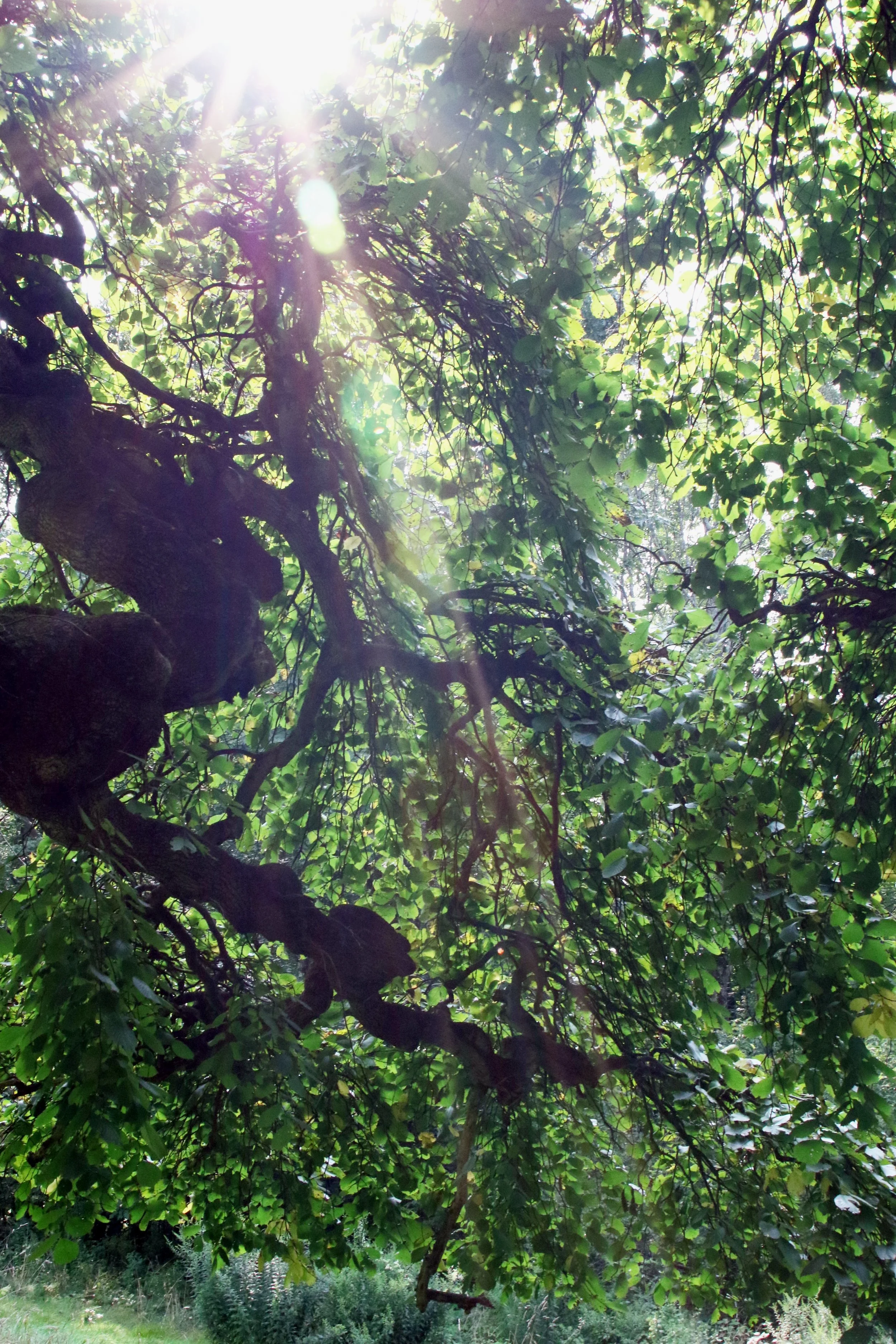The Camperdown Elm
During my retreat, I encountered a magnificent Camperdown Elm near the stone remnants of a former Gilded Age mansion. This wasn't just any tree, as I quickly informed anyone unfortunate enough to make eye contact with me. No, this was a cultivated specimen, incapable of reproducing from seed—a botanical metaphor so perfect for my personal journey that I nearly sprained something rushing back to my journal to record it.
In the summer of 2024, I marked my half-century planetary orbit with a week of self-imposed monastic exile at Kripalu Center for Yoga & Health in Lenox, Massachusetts—a birthday gift to myself that screamed "midlife crisis" with the subtlety of a Sanskrit chant through a megaphone.
For seven days, I embraced the quintessential Gen X spiritual retreat: practicing yoga thrice daily, consuming quinoa in reverent silence, and spending the intervening hours engaged in such profound activities as hiking, journaling, and contemplating why I hadn't yet written the Great American Novel.
If you've ever watched Mike White and Laura Dern's brilliant-but-canceled series "Enlightened," please mentally overlay that show's pitch-perfect satire onto everything I'm describing. Yes, I was that person—seeking enlightenment with the desperate enthusiasm of someone who has realized that existential fulfillment isn't, in fact, hiding in their Instagram notifications.
Having not circumnavigated the entire globe (though I've certainly mentioned my limited travels to enough dinner parties to make it seem otherwise), I can confidently declare that my favorite landscapes exist exclusively in the Pacific Northwest and the Berkshires—a preference I share with approximately 17 million other self-actualizing professionals who own at least one pair of premium hiking boots.
This variety of Wych elm (or Scotch Elm, if you're being pretentiously European about it) traces its lineage to a single peculiar tree discovered at the Earl of Camperdown's estate circa 1850. By the late 19th century, grafting these elms became the horticultural equivalent of displaying a Fabergé egg—the ultimate status symbol for America's elite gardens and arboretums. Its presence at Kripalu silently testifies to the property's aristocratic past, though I prefer to focus on its "sacred" qualities, as designated by the collective consciousness of people wearing $128 yoga pants.
While other retreat participants meditated beneath its umbrella-like canopy (eyes closed, expressions suggesting communication with higher dimensions), I saw something more profound: a living metaphor for genealogical research. Each twisted, contorted branch representing a DNA strand in my family tree! Each graft symbolizing the methodical construction of ancestral narratives! The parallels were so obvious that I marveled at how no one had written a doctoral thesis on it before.
The tree's complex, unpredictable growth pattern—developing not through natural reproduction but through deliberate human intervention—perfectly mirrors how we construct family histories. Both require careful grafting rather than linear progression. Both form connections that appear chaotic to the untrained eye yet reveal coherent patterns when viewed holistically. Both make excellent topics for dominating conversations at dinner parties when you've just returned from a spiritual retreat and haven't quite readjusted to social norms.


